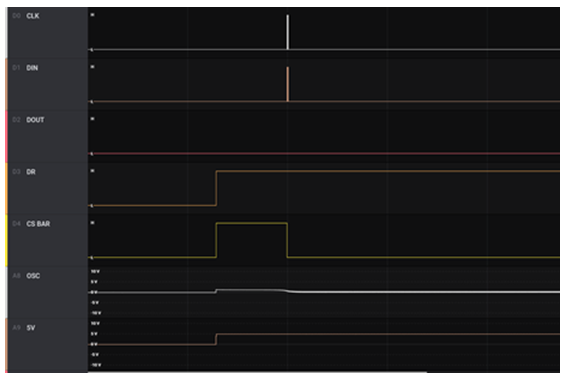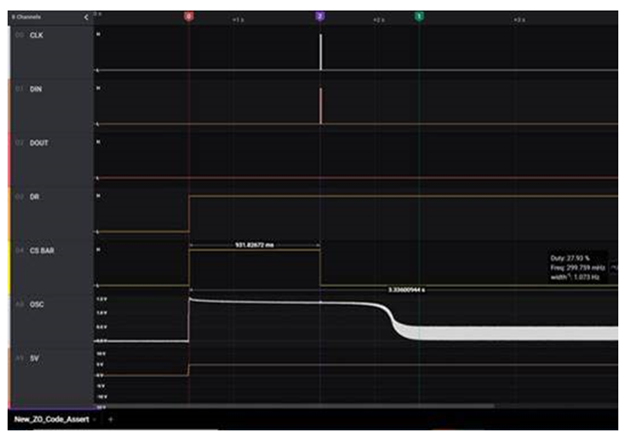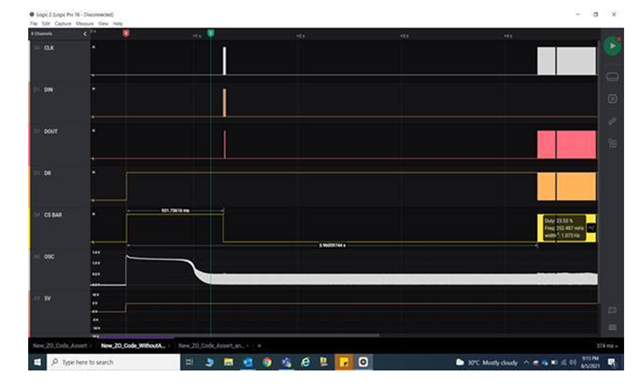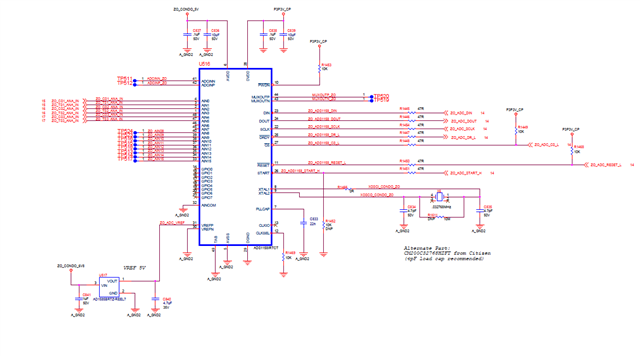Hi,
Thanks for your patience
Please find the attached waveform
When CS goes low before crystal stabilization, the ADC throw error (DOUT coming). Please find the attached waveform. Here the CS time is 715ms

So, we have increased CS time to 936ms. But, when we tune the CS pin timing, the oscillator time also getting extended without modifying the hardware. Please let us know the reason for it.
In this case, also the ADC throws an error. This issue is randomly coming. If the crystal stabilizes before CS goes low, this error did not come into the picture.

No error scenario:

Schematic:

Regards,
Murugavel.S


